
There’s something truly moving about Vincent van Gogh’s paintings, isn’t there?
From Sunflowers to The Starry Night, his masterpieces are known all over the world. In Japan, Van Gogh remains one of the most beloved artists—his special exhibitions always draw large crowds.
But did you know that you can see Van Gogh’s paintings in several museums across Japan?
That’s right—you can even see famous pieces like Sunflowers and Daubigny’s Garden right here in Japan!
In this article, we’ll introduce several museums across Japan where you can admire Van Gogh’s art up close. You might even want to add a few of them to your next travel plan!

Yamagata Prefecture
Yamagata Museum of Art
” Oil on canvas on wood ” (1884)
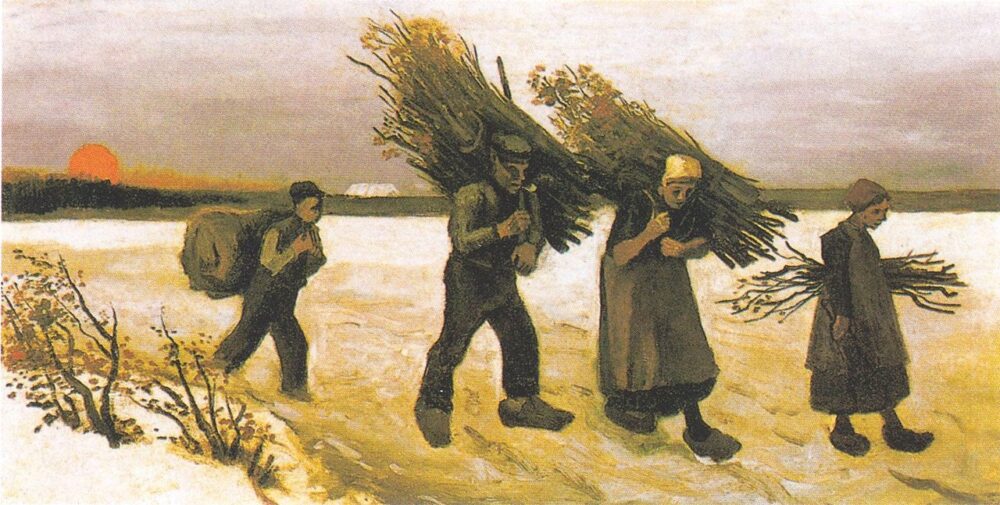
Oil on canvas, 67.0 × 126.0 cm
About This Work (Tap or Click to View)
This painting at the Yamagata Museum of Art is from Van Gogh’s early years, when he was still living in the Netherlands.
The overall tone is dark and earthy—quite different from the bright image we usually associate with Sunflowers.
At that time, Van Gogh was deeply interested in portraying the lives of peasants and laborers. He focused on realism rather than beauty, capturing the struggles and dignity of working people.
Unfortunately, such paintings were hard to sell.
His younger brother, Theo, who worked at the art gallery Goupil & Cie in Paris, supported Vincent financially. Yet Theo also hoped that his brother could eventually make a living from his art.
He encouraged Vincent to try a brighter, more colorful style—like the Impressionists who were becoming popular in Paris.
But Van Gogh refused. He believed that his darker, heavier expression was the true path for him.
This dedication led to one of his most important works, The Potato Eaters, completed the following year. Although Van Gogh considered it the culmination of his efforts, the painting received little recognition at the time and brought him no commercial success.
Fukushima Prefecture
Morohashi Museum of Modern Art
” Peasant Woman, Half-Figure, Sitting ” (1884–1885)
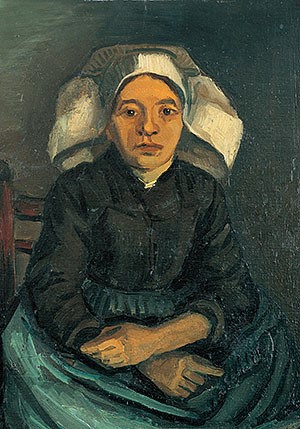
About This Work (Tap or Click to View)
The Morohashi Museum of Modern Art in Fukushima also houses an early Van Gogh painting.
Peasant Woman, Half-Figure, Sitting was likely one of the studies he created while preparing for The Potato Eaters.
Around 1885, Van Gogh was determined to capture the real lives of peasants. He spent time observing and sketching them in their daily routines, seeking to express their inner strength and humanity.
This woman was probably one of the people he met during those days in the fields.
Unlike many of his peasant paintings, which are rough and heavily textured, this piece has a softer feel.
The gentle layering of colors around her face and her calm, kind expression give the work a quiet emotional depth.
It may not be a flashy piece, but it beautifully shows how seriously Van Gogh tried to understand the human spirit.
The Morohashi Museum is best known for its extensive Salvador Dalí collection, but discovering such a serene Van Gogh painting there is a wonderful surprise. Be sure to see it in person when you visit!
▶ Read more about the Morohashi Museum of Modern Art here
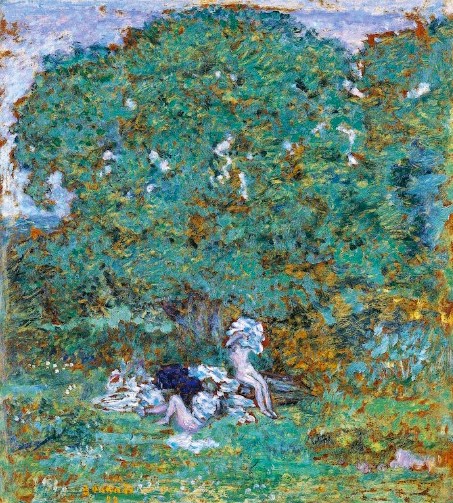
Ibaraki Prefecture
Kasama Nichido Museum of Art
” Woman on a Road among Trees “(1889-1890)
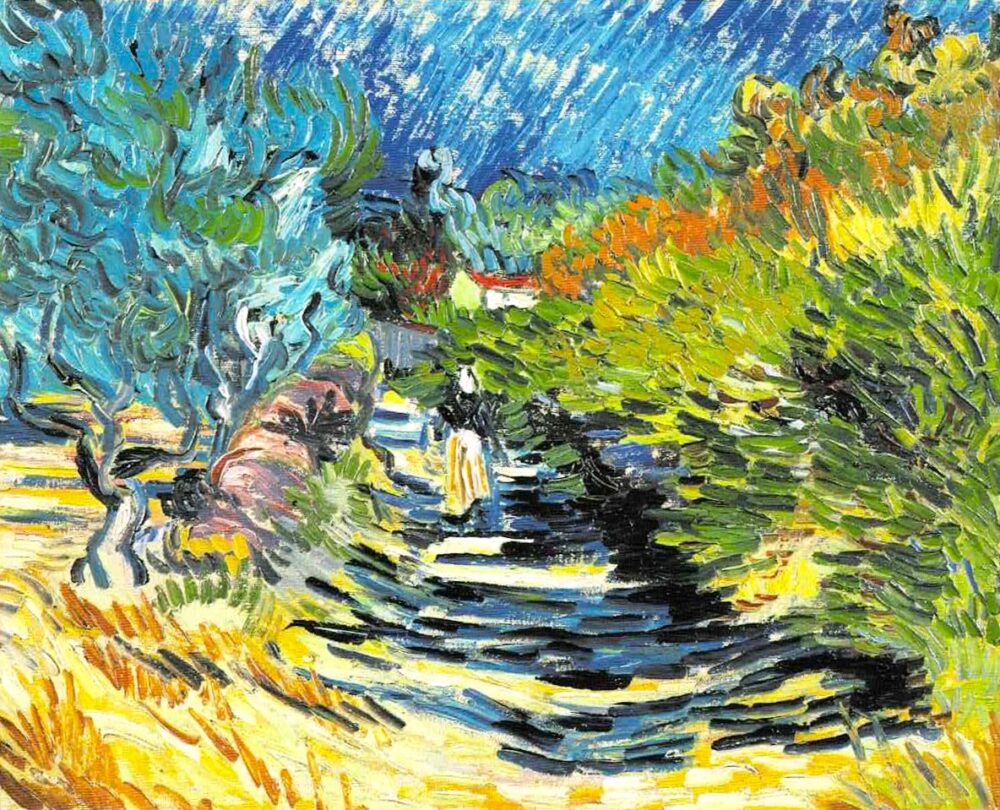
About This Work (Tap or Click to View)
At the Kasama Nichido Museum of Art in Ibaraki Prefecture, you can find a painting created during one of Van Gogh’s most difficult times.
The scene is set in Saint-Rémy, southern France. In 1889, Van Gogh voluntarily entered a hospital there to recover from mental illness while continuing to paint.
During this period, he was struggling not only with poor health but also with the pain of not being recognized as an artist—his works were not selling at all.
Still, he never stopped painting. Creating art remained his only source of strength and peace.
Woman on a Road among Trees was painted during his stay at the hospital.
Although it’s a relatively small piece, its bold brushstrokes and vivid colors are filled with that unmistakable “Van Gogh energy.”
▶ Read more about the Kasama Nichido Museum of Art here
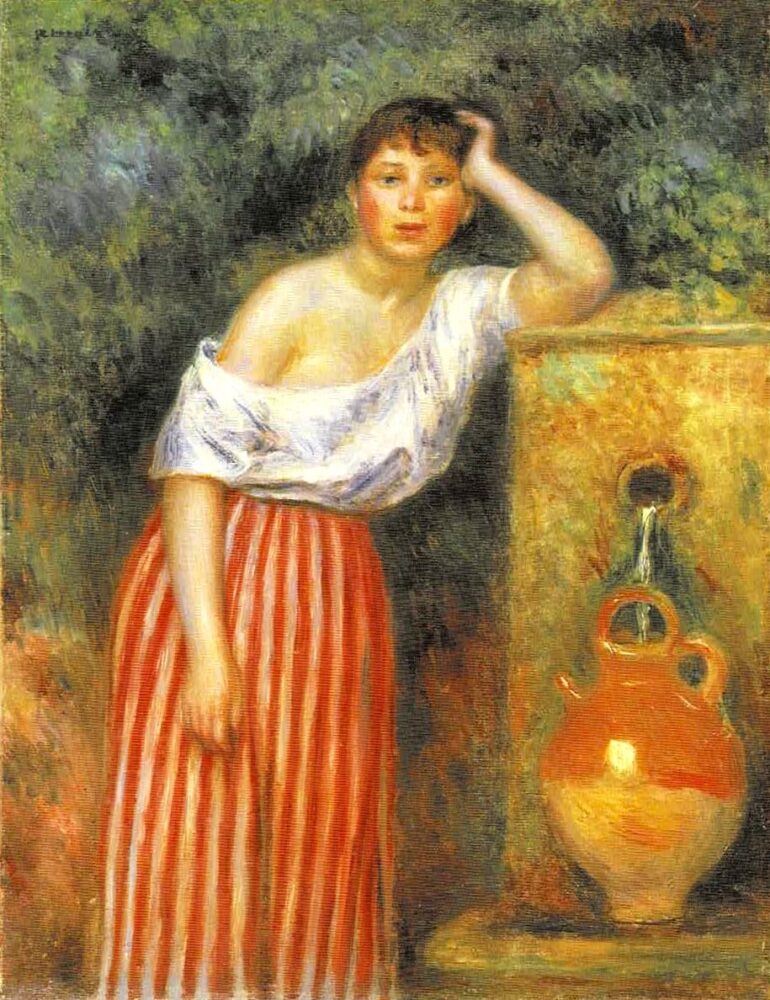
Tokyo Prefecture
SOMPO Museum of Art
” Vase with Fifteen Sunflowers ” (1888-1889)

About This Work (Tap or Click to View)
When people think of Van Gogh, Sunflowers is often the first painting that comes to mind.
And here’s the good news—you can see one of these iconic masterpieces anytime at the SOMPO Museum of Art in Shinjuku, Tokyo.
Van Gogh painted Sunflowers while living in Arles, southern France. At the time, he was preparing for the arrival of his fellow artist and friend Paul Gauguin, with whom he dreamed of sharing a “Studio of the South.”
He wanted to decorate Gauguin’s room with paintings of sunflowers as a warm and welcoming gesture.
Van Gogh even planned to create a series of sunflower paintings arranged like a triptych around portraits, and he worked intensely on several versions of Sunflowers during that period.
The version housed at the SOMPO Museum was painted during this creative burst.
However, the dream of living and working peacefully with Gauguin did not last long. Their friendship ended in conflict, leading to the infamous “ear-cutting incident.”
This Sunflowers painting stands as a symbol of both Van Gogh’s hopes and his emotional turmoil—a deeply personal masterpiece filled with longing and friendship.
▶ Read more about the SOMPO Museum of Art here
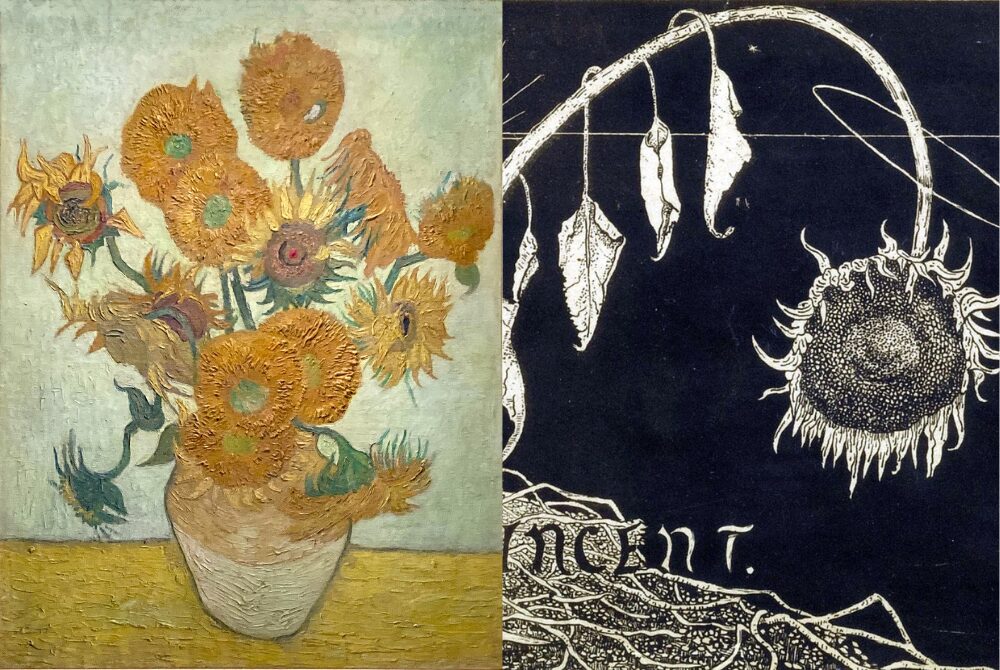
Artizon Museum
” Herrings ” (1886)

About This Work (Tap or Click to View)
In 1886, Van Gogh left the Netherlands and finally moved to Paris—the heart of the art world.
At that time, Impressionism and Neo-Impressionism were flourishing, with their bright colors and light, airy brushstrokes.
However, Van Gogh was still deeply influenced by the dark, realistic tones of the Barbizon and Romantic schools. His early days in Paris show that he wasn’t quite ready to embrace the new, colorful Impressionist style.
He briefly studied at Fernand Cormon’s studio, where artists like Henri de Toulouse-Lautrec and John Russell also trained. But Van Gogh’s shy and stubborn nature made it difficult for him to fit in, and he soon left the school.
After that, he mostly stayed in his brother Theo’s apartment, painting still lifes in solitude.
One of those works is Herrings. Interestingly, in French slang, “herring” was also a term for “policeman.” Some scholars suggest that Van Gogh may have chosen this motif as a bit of dark humor—perhaps mocking his run-ins with the police.
A small painting, but with a witty twist that shows Van Gogh’s ironic sense of humor.
” Windmills on Montmartre ” (1886, Artizon Museum)
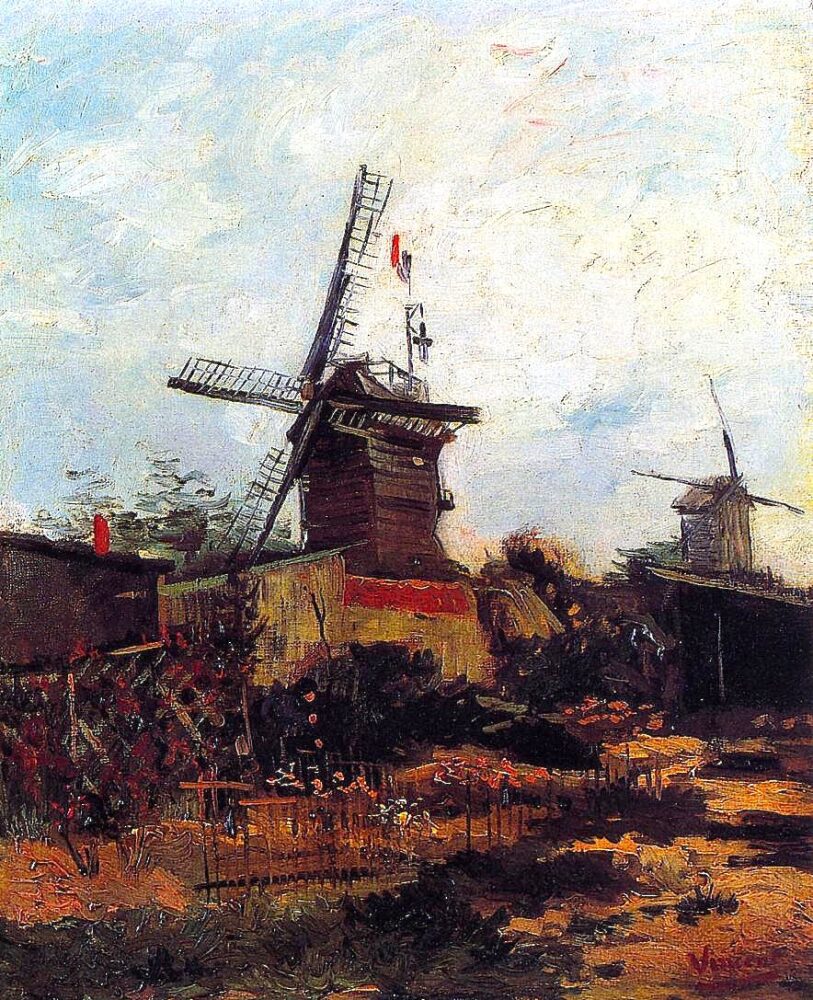
About This Work (Tap or Click to View)
Van Gogh’s early paintings were often dark and somber in tone.
But when he moved to Paris in 1886, everything began to change.
The vibrant colors of the city, the shimmering light of the Seine, and his encounters with Impressionist painters all started to transform his style.
Windmills on Montmartre captures this exact moment of transformation.
You can still see traces of his Dutch period in the muted tones, but the brighter sky and lighter atmosphere hint at the “new Van Gogh” that was emerging.
It’s the perfect piece to witness how Van Gogh evolved from a dark realist into a painter of light and color.
” Flowers ” (ca.1886, Artizon Museum)
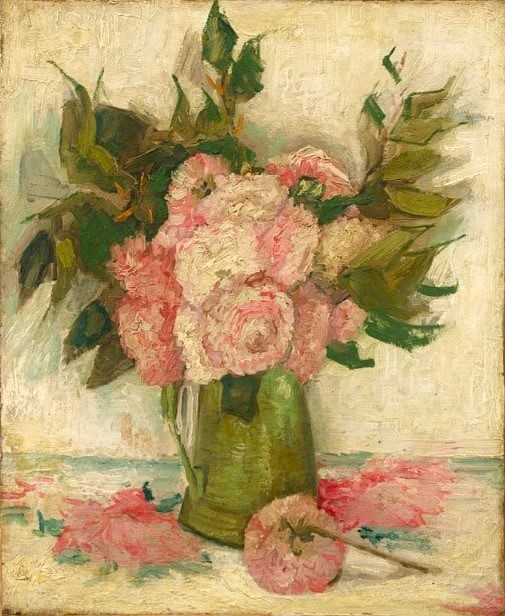
About This Work (Tap or Click to View)
This Flowers painting is thought to have been created shortly after Windmill at Montmartre and Herring, during Van Gogh’s Paris period.
The first thing you’ll notice is its brightness and vivid color.
Earlier in 1886, Van Gogh also painted dark, Monticelli-inspired flower still lifes against black backgrounds—but this one feels completely different.
The white background and colorful blossoms show a dramatic shift toward light and color, revealing his growing fascination with new artistic styles.
In Paris, Van Gogh was deeply inspired by the Impressionists—and soon after, by Japanese ukiyo-e prints as well.
This Flowers painting beautifully captures that transitional moment when his palette opened up and his artistic vision became more radiant and modern.
▶ Read more about the Artizon Museum here
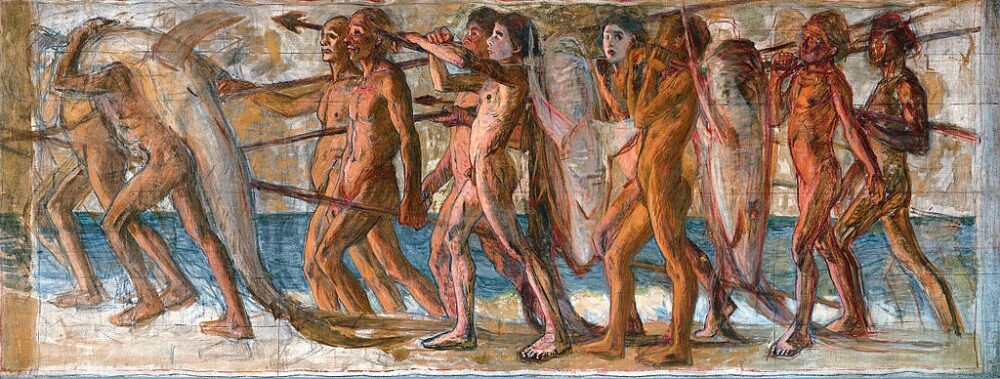
The National Museum of Western Art
” Roses ” (1889)
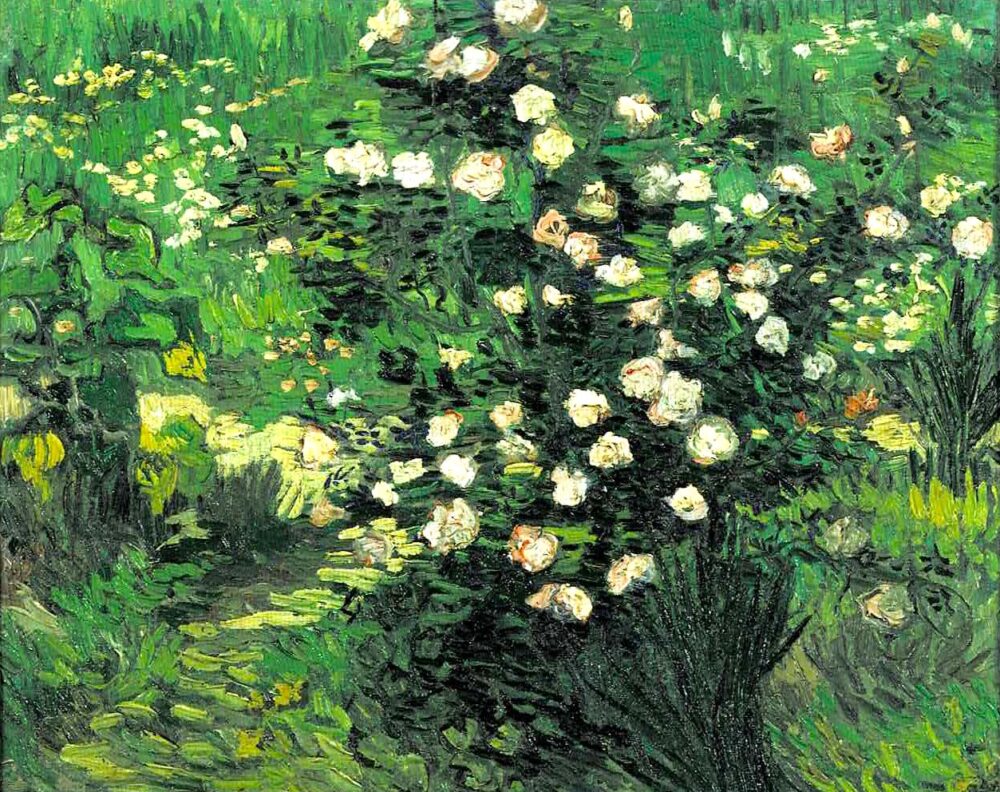
About This Work (Tap or Click to View)
After the infamous ear-cutting incident, Van Gogh voluntarily entered a psychiatric hospital in Saint-Rémy, southern France.
It was one of the lowest points in his life—he was losing his passion for painting and struggling with deep emotional pain.
Yet, even in this state, he never stopped creating. Painting remained his way of healing.
This Roses painting was inspired by flowers blooming in the hospital garden.
Unlike his more dramatic brushwork, this piece feels calm and quiet. You can sense how carefully he observed each petal, capturing them with a gentle, peaceful touch.
A single rose blooming in a troubled heart—this painting radiates that kind of quiet tenderness. It’s one of Van Gogh’s most soothing and intimate works.
▶ Read more about The National Museum of Western Art here

Tokyo Fuji Art Museum
” Cottage with Peasant Woman Digging ” (June 1885)

About This Work (Tap or Click to View)
This painting was created just a month after Van Gogh completed his masterpiece The Potato Eaters.
It reflects his Dutch period, when he focused on the simple and honest life of peasants, using dark, earthy tones and a humble atmosphere.
However, shortly after completing this work, a major incident occurred.
One of the models from The Potato Eaters, Gordina de Groot, was discovered to be pregnant.
Because Van Gogh often visited her family to paint, local villagers suspected him, and the Catholic Church even forbade its members from posing for him.
This restriction left Van Gogh without models for his figure paintings.
To make matters worse, tensions with his own family also grew.
His sister Anna became angry about the burden he placed on their parents, and Van Gogh was eventually forced to leave his family home.
Feeling isolated and misunderstood, he decided to leave the Netherlands for good, moving to Antwerp, Belgium.
From that point on, Van Gogh would never return to his homeland.
▶ Read more about the Tokyo Fuji Art Museum here
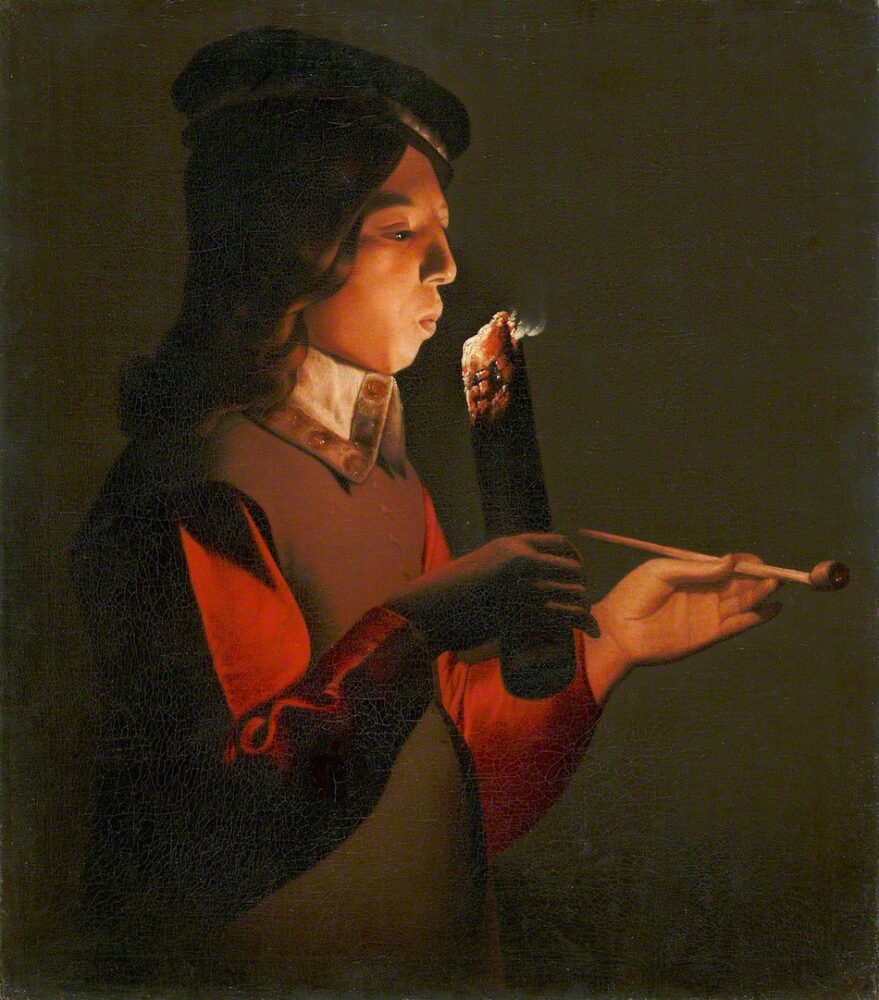
Kanagawa Prefecture
Pola Museum of Art
” The Gleize Bridge over the Vigueirat Canal ” (March 1888)
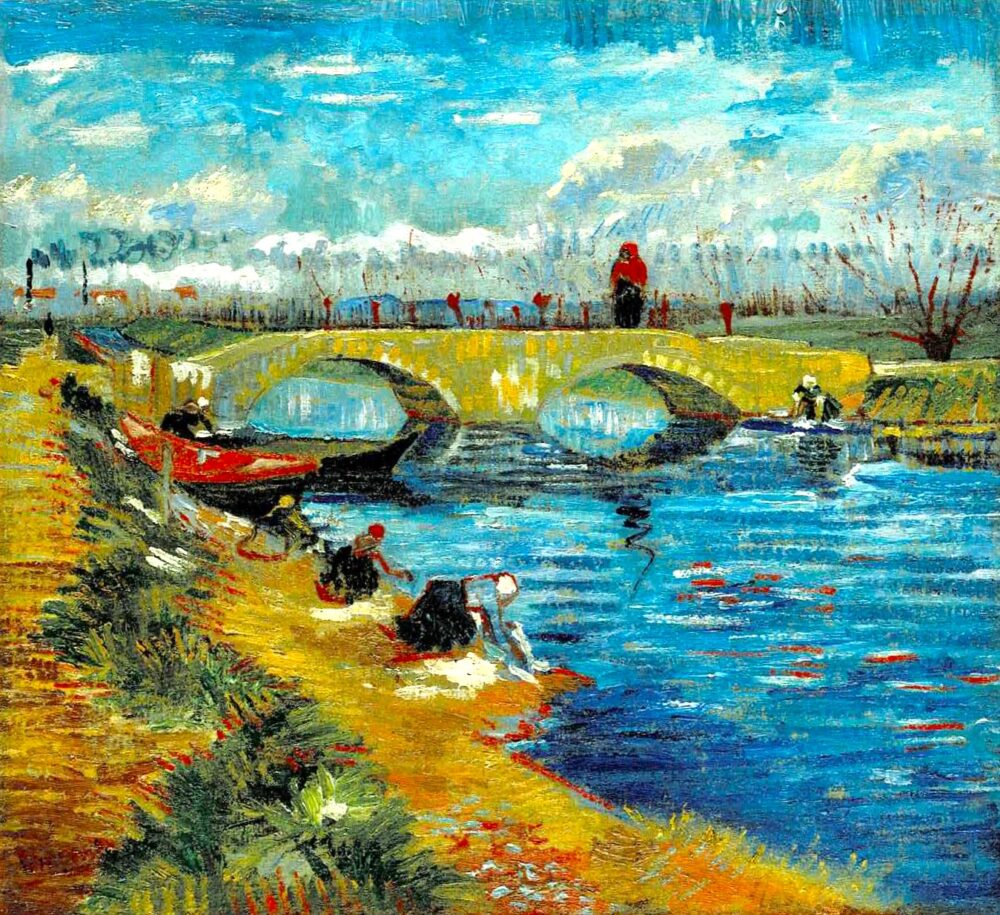
About This Work (Tap or Click to View)
After being inspired by Impressionism and Japanese woodblock prints, Van Gogh moved to Arles in southern France in search of new artistic possibilities. Under the bright southern sunlight, his sense of color blossomed dramatically.
This The Gleize Bridge over the Vigueirat Canal was painted soon after his arrival in Arles. The scattered touches of red on the river and boats make a strong impression, showing how Van Gogh began experimenting with complementary colors at this time.
From here, he went on to create masterpieces like Café Terrace at Night and The Night Café, where color became the true star. This painting can be seen as the first step in his lifelong exploration of color.
” Clumps of Grass ” (1889, Pola Museum of Art)
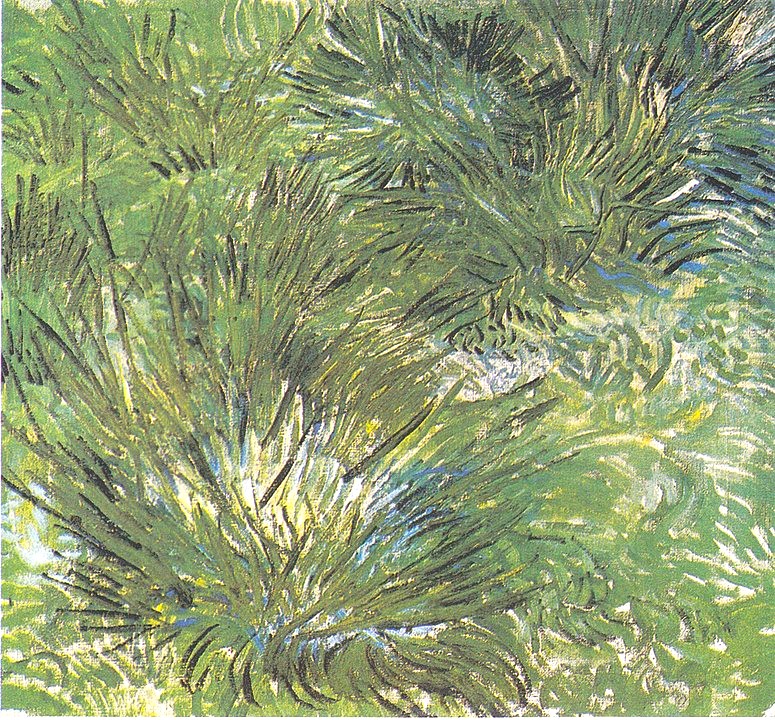
About This Work (Tap or Click to View)
In September 1888, Van Gogh wrote to his brother Theo:
” If we study Japanese art, then we see a man, undoubtedly wise and a philosopher and intelligent, who spends his time — on what? — studying the distance from the earth to the moon? — no; studying Bismarck’s politics? — no, he studies a single blade of grass.
But this blade of grass leads him to draw all the plants — then the seasons, the broad features of landscapes, finally animals, and then the human figure. He spends his life like that, and life is too short to do everything.
Just think of that; isn’t it almost a new religion that these Japanese teach us, who are so simple and live in nature as if they themselves were flowers? “
From Vincent van Gogh to Theo van Gogh, letter 686, Arles, Sunday, 23 or Monday, 24 September 1888, in The Letters of Vincent van Gogh, ed. Leo Jansen, Hans Luijten, and Nienke Bakker (Amsterdam: Van Gogh Museum, 2009).
Van Gogh admired how Japanese artists found beauty in small, humble things. He deeply respected a way of seeing nature that feels close to an animistic sense of nature in Japan, where even small things are treated with deep respect.
In 1889, after repeated mental health episodes in Arles, Van Gogh entered a hospital in Saint-Rémy. Unable to go outside for a time, he painted the gardens and grassy areas within the hospital grounds to bring peace to his mind.
Clumps of Grass was created during that period of recovery.
The painting captures nameless grasses growing at his feet. Through his calm, attentive gaze, we can feel his belief that “true beauty lies in the smallest things.”
While painting this, he may have recalled the image of Japanese artists he admired — and with that same spirit, he slowly began to regain his passion for art.
” Flower Vase with Thistles ” (1890, Pola Museum of Art)
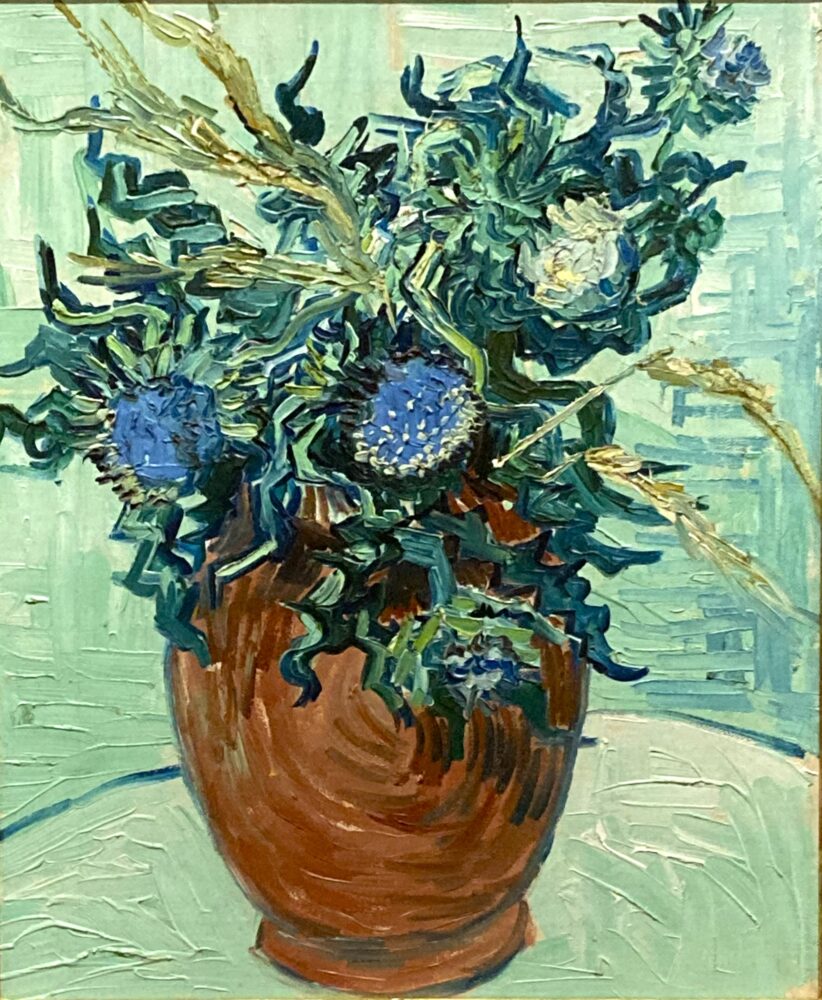
About This Work (Tap or Click to View)
After leaving the hospital in Saint-Rémy, Van Gogh moved to the quiet village of Auvers-sur-Oise, northwest of Paris. Surrounded by nature, he painted with extraordinary energy — creating more than 70 oil paintings in just two months.
Flower Vase with Thistles is one of these final works, painted only about a month before his death.
The bright, delicate thistle flowers are striking, yet the sharp leaves and spines around them are drawn with equal care.
During this time, Van Gogh’s brushstrokes became rougher and more forceful, as if driven by raw emotion. In this painting, that dynamic energy brings out both the beauty and the pain of life — the softness of the flower and the sting of its thorns.
It’s a painting that reflects Van Gogh’s deep gaze into the dual nature of existence — tenderness and struggle, beauty and sorrow, all coexisting in a single moment.
▶ Read more about the Pola Museum of Art here
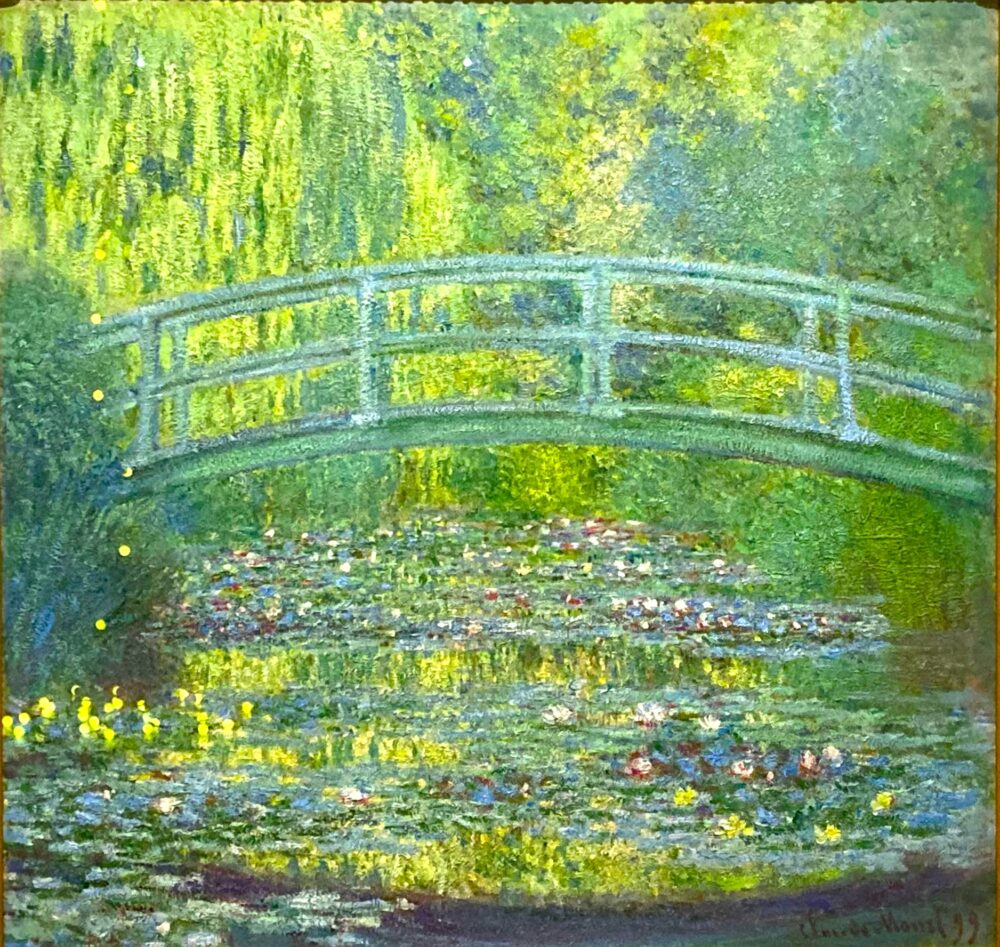
Gifu Prefecture
Hikaru Museum
” Peasant Woman Laundering ” (1885)

About This Work (Tap or Click to View)
In 1885, Van Gogh was living in Nuenen, a small village in the Netherlands. He stayed at his parents’ home and relied on financial support from his father and his brother Theo. But family tensions slowly grew. Van Gogh often clashed with his father, Theodorus, and the family worried about his future as an artist, since he was unable to sell his paintings.
In the middle of all this, his father suddenly passed away from a stroke. With little time to grieve, Van Gogh’s relationship with the rest of the family became even more strained. He eventually had no choice but to leave his parents’ home. The small house he used as a studio also ended up canceling his contract due to a local scandal, and Van Gogh finally left the Netherlands behind. He would never return.
Although Van Gogh’s mother, Anna, loved him deeply, she struggled to understand her son — a former art dealer who lost his job, failed to become a minister, and still couldn’t succeed as an artist. Even later in life, when Van Gogh was hospitalized for his mental health, she never visited him.
Many of the works he left behind in Nuenen were sold off cheaply by Anna. This Peasant Woman Laundering is believed to have been one of those paintings.
▶ Read more about the Hikaru Museum here
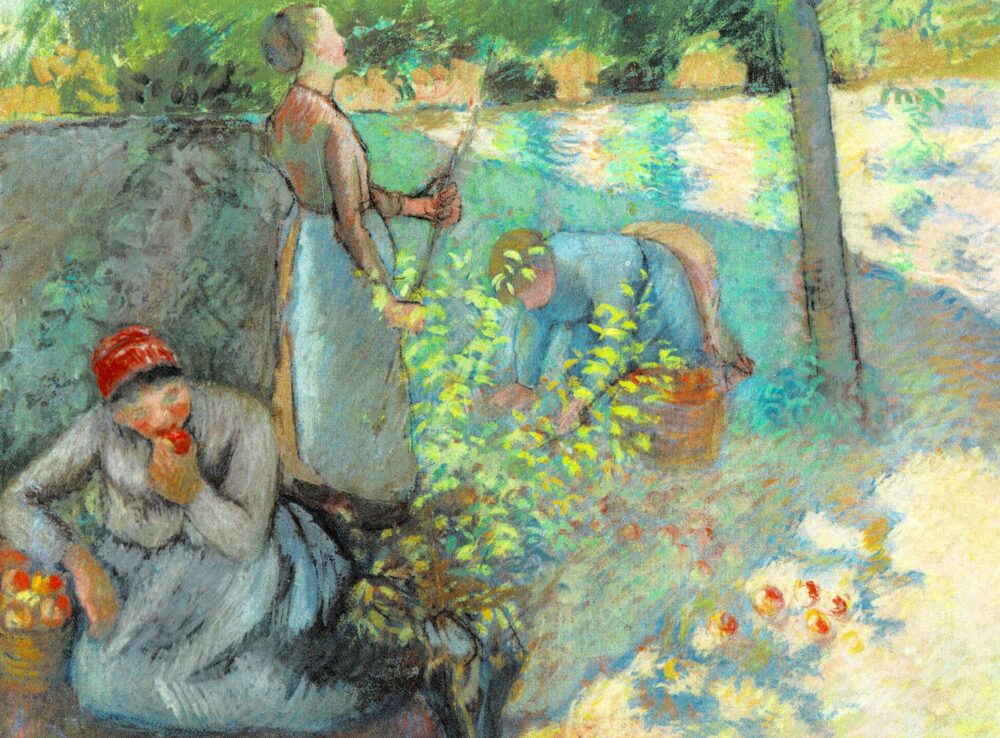
Aichi Prefecture
Menard Art Museum
” Evening, The End of the Day (after Millet) ” (1889)
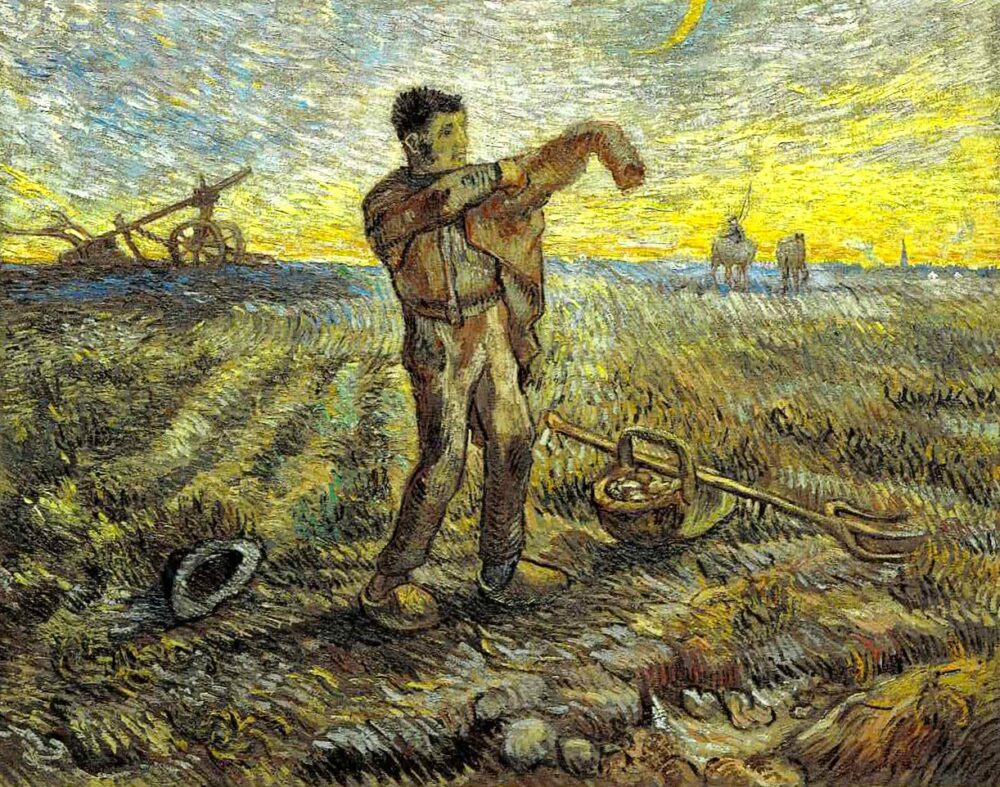
About This Work (Tap or Click to View)
At the very beginning of his journey as an artist, Van Gogh was deeply inspired by Jean-François Millet, a master of the Barbizon School known for his solemn depictions of rural life. Van Gogh’s early Dutch paintings — dark, heavy, and serious — show just how strongly Millet influenced him.
This work, The End of the Day, is Van Gogh’s tribute to Millet. He painted it in 1889 while staying in a mental hospital in Saint-Rémy.
By this time, Van Gogh’s style had changed dramatically compared to his early years. After moving to Arles, his palette became brighter, and he absorbed influences from French Impressionism, Pointillism, Japanese ukiyo-e, and Cloisonnism. His paintings began to shine with vivid, expressive color.
Even so, Millet remained special to him. By copying Millet’s compositions, Van Gogh may have been trying to connect with his own inner thoughts.
This painting is based on Millet’s 1873 print, but it is far more than a simple copy. The sky, the farmers’ clothing, and even the smallest details of the landscape are reimagined with Van Gogh’s unique colors and brushwork. It is a heartfelt blend of respect for Millet and Van Gogh’s own artistic spirit.
” Plaster Statuette of a Female Torso ” (1887, Menard Art Museum)

About This Work (Tap or Click to View)
In 1886, Van Gogh enrolled at the Royal Academy of Fine Arts in Antwerp, Belgium. He studied figure drawing and plaster casts, but his memories of the academy were not pleasant.
The director, Charles Verlat, criticized him harshly — even comparing his work to “a rotten dog.” His drawing instructor also pointed out mistake after mistake. Van Gogh, furious at these comments, exploded in anger, saying, “A drawing that only focuses on accuracy is as good as dead!” Before long, he left the academy altogether.
Still, Van Gogh clearly understood the importance of solid drawing skills, especially for figure painting. In fact, that is why the criticism hurt so much — he cared deeply. His passionate but sometimes explosive personality was simply part of who he was.
This Plaster Statuette of a Female Torso was painted after his time in Antwerp, during his period in Paris. Compared to many of his other works, the brushstrokes here are finer and more controlled, capturing the stone texture and three-dimensional form with care. It’s a quiet but powerful example of how seriously Van Gogh worked to build his foundations as an artist.
▶ Read more about the Menard Art Museum here
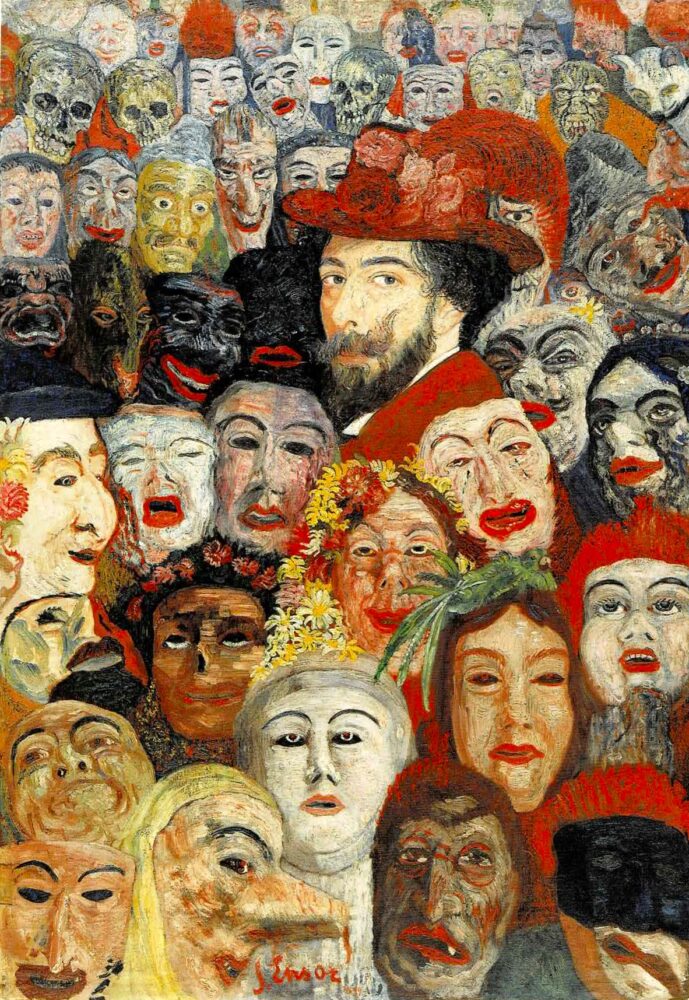
Kyoto Prefecture
Asahi Group Oyamazaki Villa Museum of Art
” Peasant Woman at the Window ” (1885)
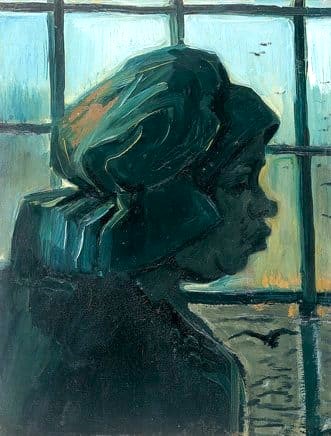
About This Work (Tap or Click to View)
By 1885, about five years had passed since Van Gogh had begun painting seriously. Around this time, he was working intensively on his masterpiece The Potato Eaters. He often visited nearby farmhouses to sketch the daily lives of local farmers, closely observing how they lived and worked.
Many works from this period feel dark, muted, and earthy. Van Gogh had not yet reached the bright and colorful style we associate with him today — but his interest in color was already taking root.
During this period, Van Gogh read Charles Blanc’s book The grammar of painting and engraving, which introduced him to color theory and complementary colors. Although Peasant Woman at the Window might look subdued at first glance, you can see how carefully he distinguishes between warm reddish grays and cooler bluish grays. He was exploring how colors “resonate” with each other.
This quiet, steady experimentation would later blossom into the bold, brilliant colors of his Arles and Saint-Rémy periods. Knowing the effort behind that transformation makes this painting feel especially meaningful.
▶ Read more about the Asahi Group Oyamazaki Villa Museum of Art here
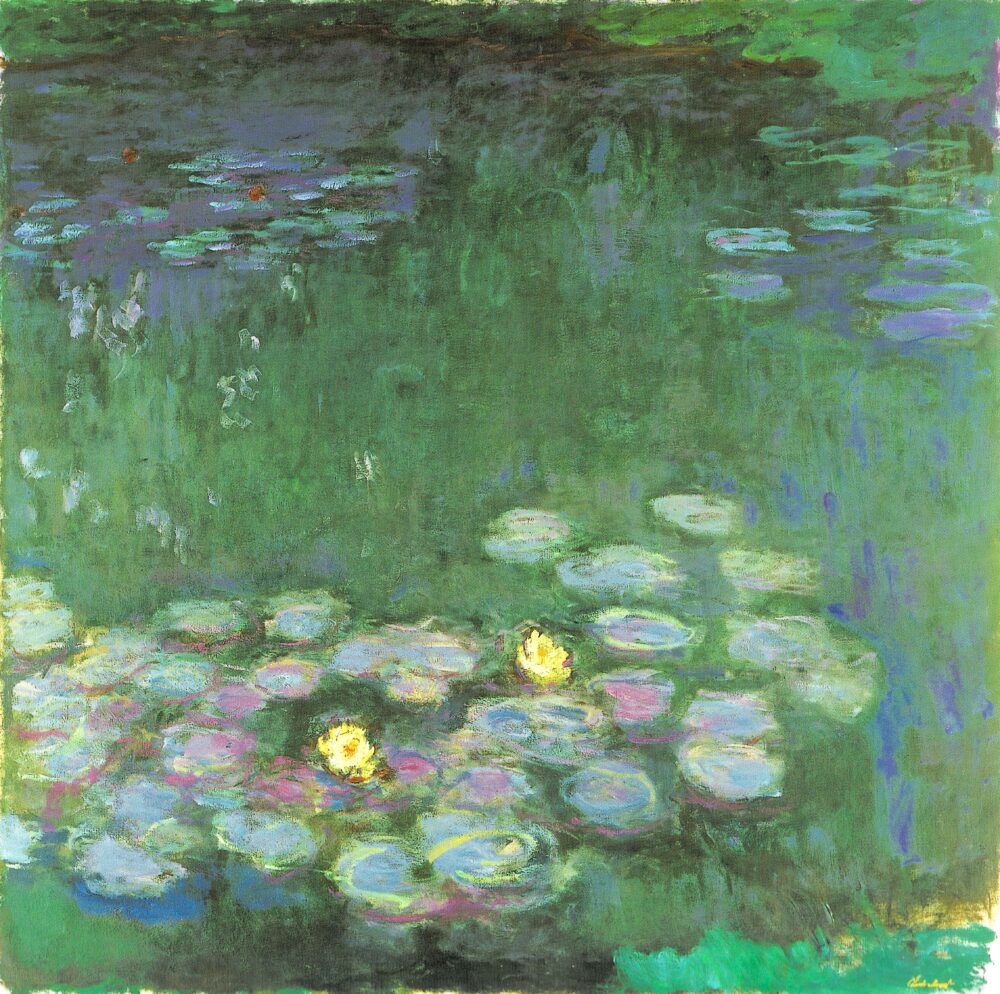
Osaka Prefecture
Kuboso Memorial Museum of Arts, Izumi
” Peasant Digging “(1882)
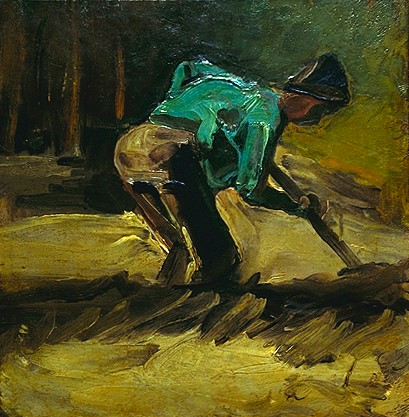
About This Work (Tap or Click to View)
Van Gogh decided to become an artist in 1880. At first, he focused almost entirely on drawing. He avoided oil painting because he found the materials difficult to handle.
Still, he realized that continuing with drawings alone would not help him grow as an artist, and by 1882 he began working seriously with oils. Peasant Digging was created during this early stage.
In his still-life paintings from this period, Van Gogh carefully layered paint using traditional techniques. But when it came to painting people in motion, he struggled. You can sense that difficulty here — the brushwork is rough, and the composition feels like he is still finding his way.
Even so, depicting people was one of Van Gogh’s most important lifelong themes. Later, he would create powerful portraits such as The Potato Eaters and The Postman Joseph Roulin, works that defined his legacy.
In this piece, you can clearly feel the “first steps” toward that future.
” Woman Spinning ” (1883-1884, Kuboso Memorial Museum of Arts, Izumi)
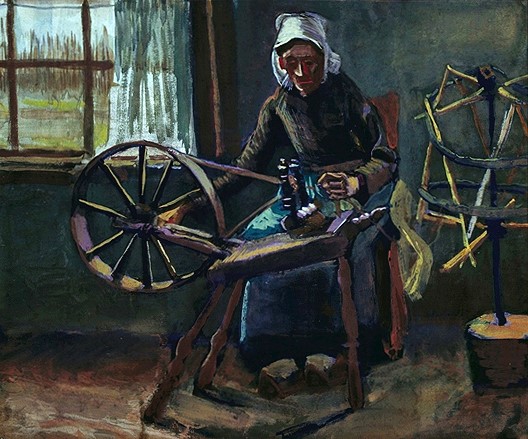
About This Work (Tap or Click to View)
After studying under his cousin, the painter Anton Mauve, in The Hague, Van Gogh returned to his family home in Nuenen. There, he continued painting local farmers and laborers.
His life, however, was very difficult. He had almost no income and depended entirely on support from Theo and his parents. His relationship with his father, Theodorus, was especially tense, and they argued frequently. Villagers often saw him as strange and even called him “the odd painter.”
Even so, some locals were willing to pose for him — including, very likely, the woman shown here in Woman Spinning.
This painting reveals how sincerely Van Gogh observed the working lives of ordinary people. Despite loneliness and hardship, he never stopped painting. The work carries a quiet, steady strength that reflects his determination.
” Weaver with Child in a Highchair ” (1884, Kuboso Memorial Museum of Arts, Izumi)

About This Work (Tap or Click to View)
During the Industrial Revolution, textile production in major European cities was rapidly becoming mechanized. But in Nuenen, where Van Gogh lived with his family, many craftsmen still used traditional handlooms to weave cloth.
Van Gogh was passionate about portraying people who lived on the margins of society — farmers, miners, and laborers. Among them, he had a special interest in weavers.
This work shows a man working beside a large loom while a small child sits quietly in a high chair nearby. He was likely watching his child while trying to keep up with his daily work. At the time, weaving was such a poorly paid occupation that many weavers had to take on additional jobs just to survive.
Van Gogh wanted to share these realities — the dignity of labor, the struggles of the poor, and the beauty in ordinary life.
This painting reflects that commitment clearly.
▶ Read more about the Kuboso Memorial Museum of Arts, Izumi here

Hiroshima Prefecture
Hiroshima Museum of Art
” Daubigny’s Garden ” (1890)
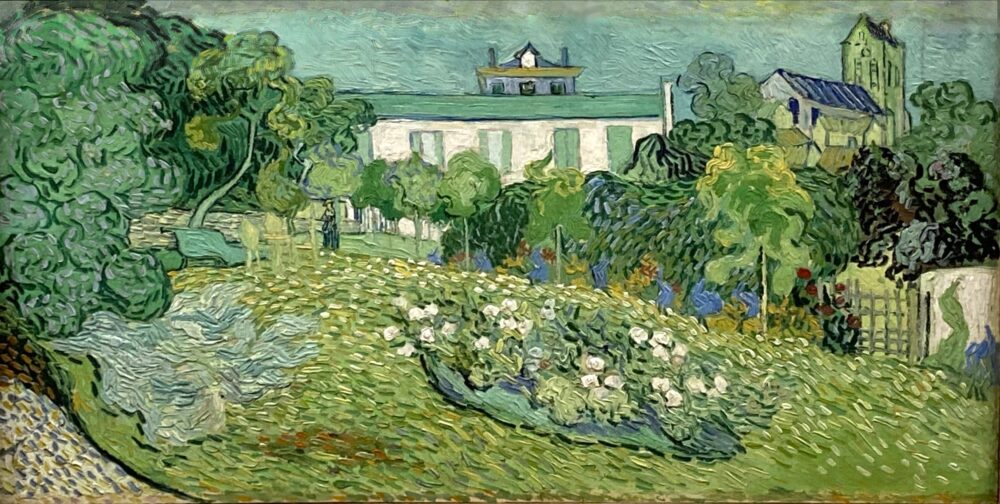
About This Work (Tap or Click to View)
After leaving the asylum in Saint-Rémy, Van Gogh traveled to Auvers-sur-Oise, a quiet village about 30 km from Paris. Surrounded by lush greenery, Auvers was beloved by artists such as Cézanne, Corot, and members of the Barbizon School.
Among them, Charles-François Daubigny was one of the painters Van Gogh admired most. Daubigny’s home still stood in Auvers, but when Van Gogh visited, the artist had already passed away. While greeting Madame Daubigny, Van Gogh was captivated by the beautiful garden that spread out in front of the house. He returned several times and eventually completed a painting of the garden.
Van Gogh created two versions of Daubigny’s Garden. The one at the Hiroshima Museum of Art is thought to be a replica of the version now in the Kunstmuseum Basel, but it is far from a simple copy. You can clearly see Van Gogh’s attempt to refine and improve upon the composition. The lively brushstrokes that bring the plants and trees to life show the maturity of his late style.
This gentle yet passionate painting was created in the final year of Van Gogh’s life. It may come as a surprise that such an important work can be seen in Japan. If you visit, take the time to feel the peaceful atmosphere surrounding this serene garden.
▶ Read more about the Hiroshima Museum of Art here

Wood One Museum of Art
” Peasant Woman ” (1885)
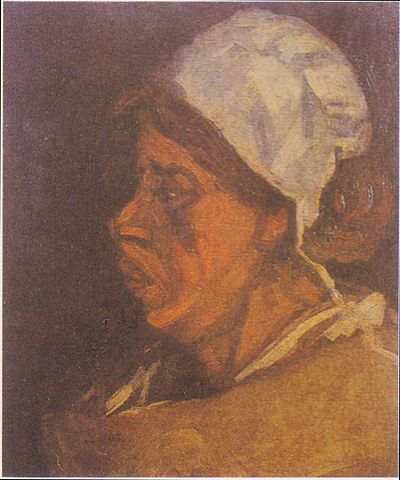
About This Work (Tap or Click to View)
When it comes to Van Gogh’s early works, their “darkness” is one of the most recognizable features. Many portraits from this period are somber and use only a small range of colors — and there’s a clear reason for this.
Before becoming an artist, Van Gogh once aimed to serve as a clergyman. He strongly wished to support and stand beside the poor. Even after picking up a paintbrush, that belief never changed. He wanted to portray farmers and laborers exactly as they were, without beautifying their lives.
For that reason, bright colors or decorative brushwork weren’t necessary. If anything, his muted palette told their stories more honestly.
This Peasant Woman is a perfect example of Van Gogh’s early style. Painted in Nuenen, the work shows sunburned, darkened skin and worn clothing — every detail expressing Van Gogh’s deep respect and affection for working people.
▶ Read more about the Wood One Museum of Art

Conclusion
Fourteen museums across Japan hold a total of 21 works by Van Gogh (excluding prints).
You might have even thought, “Wait, that museum has a Van Gogh too?”
If there’s a museum near you with a Van Gogh in its collection, it’s definitely worth a visit. And if you’re traveling or on a business trip, stopping by can be a great way to enjoy a quiet moment with his art.
(Please note that these works are not always on permanent display. Be sure to check the museum’s official website for the latest exhibition information before your visit.)
Knowing a bit about Van Gogh’s life can make his paintings feel even more meaningful.
If you’d like to explore more, feel free to check out the related articles!
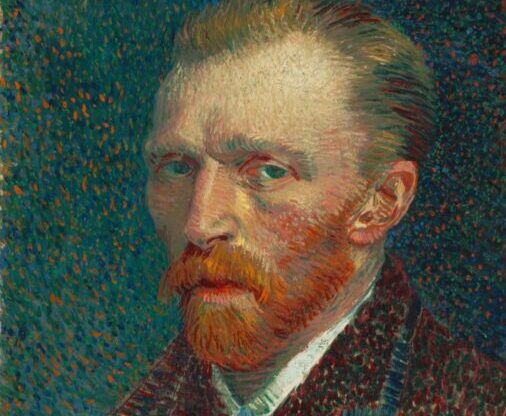
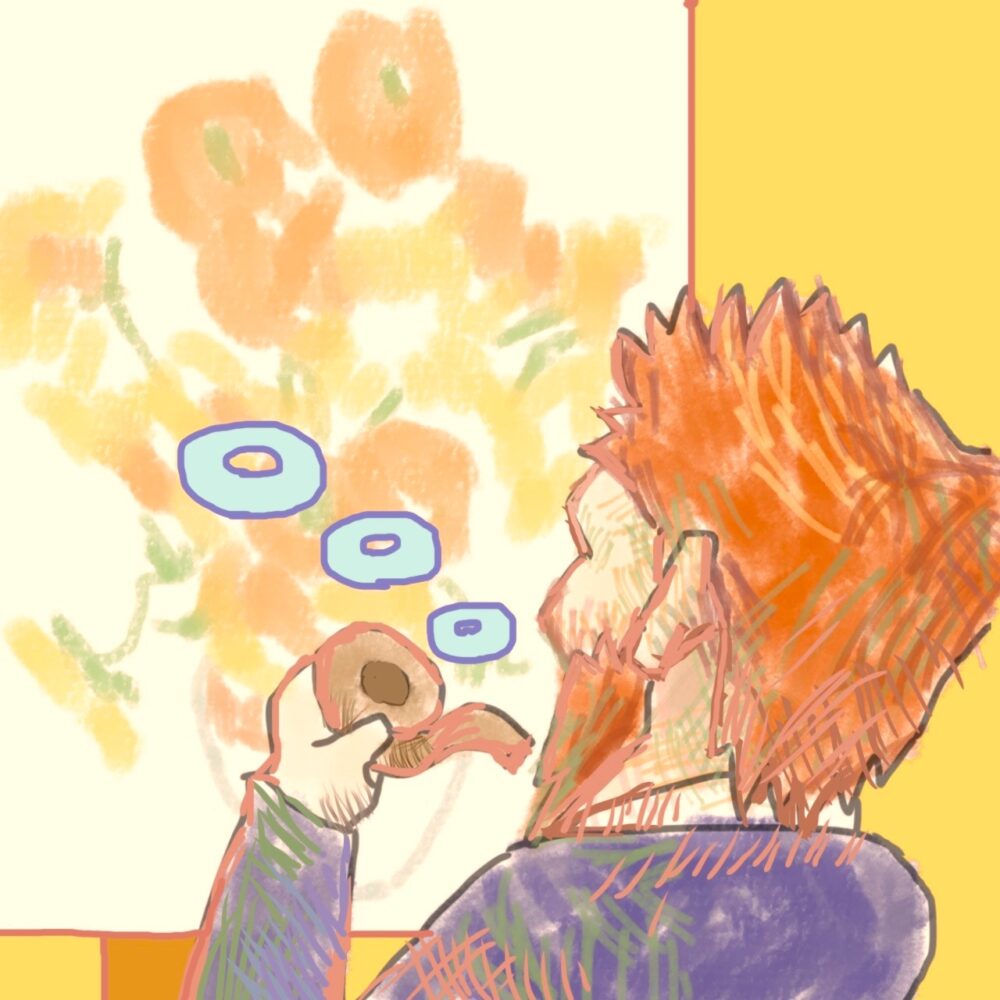


Comments